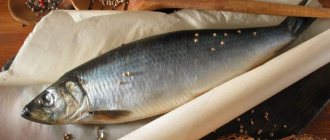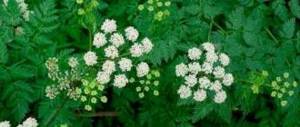Among poisonings caused by various food products, poisoning with toadstool is one of the most dangerous. Death occurs in more than 85% of cases. It is often found that novice mushroom pickers mistake toadstool for russula or champignon. Therefore, you should remember the distinctive features of pale toadstool from other porcini mushrooms:
- the leg of the pale grebe is thinner than the base;
- the color of the top of the pale grebe varies from light green to olive;
- the pale grebe has a volva on the leg near the very root, and a “skirt” in the middle of the leg;
- the presence of a dark spot in the center of the cap;
- the entire area of the pale toadstool is covered with a colorless film, which can be felt by running your hand over it;
- unlike champignons, the partitions in the cap are light;
- the cap of the pale grebe reaches 13–15 centimeters;
- pale grebe has a pleasant smell.
When picking mushrooms, you need to look carefully to ensure that toadstools do not grow near edible mushrooms. They pose a danger not only with their bodies, but also with spores carried by the wind. Once on a good mushroom, the spore turns it into the cause of severe poisoning.
Mushrooms must be cut to the very root. This will help distinguish the toadstool from other mushrooms.
About the mushroom
Pale toadstool is a deadly poisonous mushroom from the fly agaric family. Other names: white and green grebe. The fruiting body consists of a stem and a cap. When young, it appears as a small ball covered with a film mixed with mucus.
Body Description
Cap up to 17 cm, color from white to dark green. The edge is smooth, regular in shape. The surface is rough. The pulp on the crack is white and does not emit any odor. The leg is from 5 to 20 cm high, thickened at the base. The color is like a hat, with roan streaks. The plates move freely apart without breaking, they are elastic. The volva is clearly defined, 5 cm wide, 2-3 mm thick, in some cases half is covered with earth. The spores are white and not visible to the naked eye.
Ecology and distribution
The grebe prefers to live in deciduous and mixed forests. Forms mycorrhiza with oak, maple, birch, larch, and aspen. It grows in groups; single specimens are rarely found. Fruits by spores from late April to October.
Distributed mainly in the European part of Russia with a temperate climate; Asia; North America. Until recently, the pale grebe had not been found in Siberia. Single finds were recorded in the Novosibirsk, Omsk, Tyumen and Tomsk regions.
Interesting fact!
Presumably, the green fly agaric enters previously undeveloped areas through infected trees with which the mycelium is associated.
The rapid spread of toxic mycosis is associated with an increase in artificial oak plantations. Forest protection legislation and phytosanitary surveillance regulations do not provide for measures to examine plantings for symbiosis with poisonous fungi. Because of this, mushrooms move from contaminated areas to new places.
Prevention
To prevent possible poisoning, you should not buy mushrooms from street vendors, along highways, or in open markets.
When collecting mushrooms, you need to remember the external distinctive signs of the white toadstool:
- unlike champignon and greenfinch, the plates under the cap do not change color, remaining white even in an adult mushroom;
- a white wrapper up to 5 cm wide in the lower part of the leg, in the upper part there is a film volva;
- a thickened formation (“sac”) at the base of the mushroom.
Video from YouTube on the topic of the article:
How does poisoning occur?
Due to the absence of signs of poisonous mushrooms in the white fly agaric, it is easy to confuse it with the usual edible varieties - russula, float, champignon. Poisoning is most often observed in inexperienced mushroom pickers who confuse toadstool at a young age with champignon.
Heat-treated toadstool has no specific organoleptic properties; the taste and smell are pleasant. When cooking, sautéing, drying, salting, pickling, or soaking, there is no loss of poison. Toadstool poisoning occurs when it is eaten in any form.
Recovery period
If a person has experienced toadstool poisoning, it will take a long period (up to 5 months) for the body to recover.
Doctor's recommendations:
- Meals 5-6 times a day in small portions. Prepare food only by boiling, baking, and stewing. Exclude fatty, fried, smoked dishes, pickles, marinades, and semi-finished products from the menu. Preference is given to liquid porridges and jelly.
- To restore water and electrolyte balance, it is important to drink mineral water without gas. Take solutions of pharmaceutical drugs (Regidron, Oralit).
- To restore the intestinal microflora, probiotics Linex and Bifidumbacterin are prescribed.
- Enzymes Creon and Pancreatin are prescribed to facilitate digestion.
The daily routine should be organized in such a way as to reduce stress during the day and ensure proper rest at night.
Symptoms of poisoning
The dose sufficient for poisoning is ¼ of the cap (about 50 g). The venom of the toadstool contains two types of toxic substances. Amanitins are the most toxic substances and have a delayed effect; phalloidins are less toxic, but are activated immediately upon entry into the body. The lethal dose for humans is 100 - 150 g. When eating such an amount of toadstool, it is practically impossible to save the patient.
Consequences
Other poisons (for example, snake) act on humans quite quickly. Therefore, immediate help in case of a snake bite and an urgent call to a doctor may well save a person’s life and health. But by the time the first symptoms of intoxication with amanitins and phalloidins appear, the mushroom poison will have already penetrated deeply into the body, and literally seconds will count.
Back in the middle of the 20th century, the risk of dying from swallowing a piece of toadstool was 60-70%. Nowadays – 10-15%, but only with prompt medical assistance. But this does not apply to children - the child’s body is so sensitive to these toxins that the mortality rate here is 90%.
If the poisoned person is lucky and recovers, the consequences of the poisonous meal will last a lifetime. These are toxic hepatitis, impaired kidney function (up to chronic renal failure), heart problems. Neuropsychiatric disorders, memory and attention disorders may occur.
Mechanism of action of poisons
Phalloidin, which begins to act first, affects the liver, hepatocytes, and the endoplasmic reticulum of eukaryotic cells. Blocks the work of K, which is responsible for the intracellular removal of toxins. Amanitin inhibits the synthesis of energy in ATP and destroys cell lysosomes. The transcription of information from DNA to RNA is blocked - disruption of protein biosynthesis, destruction of fats and carbohydrates in the body. Massive cell death occurs—necrosis.
First of all, disturbances in the functioning of the digestive and urinary organs appear. This is due to the fact that the first blow in any poisoning is taken by the small intestine. Further, the bladder is affected due to a decrease in the elasticity of its walls (the reason is the thinned epithelium). During false relief, the functioning of the nervous system is already disrupted - the body is essentially engaged in self-deception. It seems to a person that it has become better, but in fact the liver and kidneys are already being destroyed. Fatty degeneration of the liver occurs, followed by hepatosis and tissue necrosis.
How to get rid of pale toadstool on the site
Pale toadstool can sometimes grow in the garden or plot. You need to get rid of it as quickly as possible. All parts of the green fly agaric are poisonous, even the spores and mycelium. The mushroom must be removed from the ground, and the soil in the area where it grew must be turned over so that the mycelium threads remain open. So they will quickly be destroyed by the sun's rays. After this, the area must be completely dug up. To prevent mushrooms from appearing again, the soil is treated with a 0.2% solution of copper sulfate.
Often, mushrooms develop in places with abundant litter of fallen leaves, branches and dry grass. To prevent this from happening, you need to remove plant debris and old rotten wood in a timely manner. The soil in shaded areas needs to be loosened regularly to prevent high humidity.
Important! All work with green fly agarics should be done with rubber gloves.
First aid
In all cases where a person suspects poisoning with poisonous mushrooms, it is necessary to immediately call emergency medical help. If fragments of suspicious mushrooms remain, they must be preserved for examination. While the brigade is traveling, you need to provide first aid to yourself:
- Drink 2 liters of clean boiled water.
- Induce a gag reflex by inserting two fingers into your mouth towards the root of your tongue.
- After vomiting, replenish the fluid supply in the body - take a sip of water every 10-15 minutes.
- If doctors do not arrive soon, you can drink a herbal laxative.
Algorithm of actions before the arrival of doctors
If you try to treat poisoning yourself, you may end up with irreversible consequences for human health and life. If symptoms of toadstool poisoning appear, first aid should consist of calling emergency services, and then taking a number of measures that can give the victim a chance for recovery.
Before doctors arrive, you should:
- Perform gastric lavage with a large amount of warm boiled water. To do this, first drink a liter of liquid in large sips. If there is no vomiting, press on the root of the tongue. Then repeat the procedure until only water comes out of the stomach.
- Take a laxative. The condition for this is the absence of diarrhea.
- Use the available sorbent (activated carbon in the proportion of 1 tablet per 10 kilograms of body weight, polysorb, smecta, polyphepan, sorbex, enterosgel, phosphalugel, etc.).
Gastric lavage is not advisable if a person has severe vomiting. Medical practice suggests that milk thistle serves as an antidote for poisoning with toadstool, which should be in the home medicine cabinet of those who like to pick mushrooms. This herb helps prevent the absorption of toxic substances into human organs.
In order to prepare the solution, you should take one spoon of chopped herbs, pour 250 ml of boiling water, let it brew for 15 minutes. Then put the solution in a water bath, where it boils for another half hour. After straining, drink 50 ml 4 times a day.
Treatment of poisoning and recovery period
Treatment of toadstool poisoning should be carried out in the toxicology department. The patient will receive assistance, which consists of the following points:
- gastric lavage, despite the presence of vomiting. This is explained by the fact that it is necessary to remove the remains of toadstool from the stomach, which tend to remain inside throughout the day;
- intravenous administration of Trisol, Acesol, sodium chloride and Ringer's solution. These drugs will eliminate dehydration;
- Benzyl penicillin is used as an antidote if 72 hours have not passed. The dosage is up to a million units per kilogram of the patient’s body weight. This amount is divided into 5 procedures;
- installing a glucose drip, which will protect liver tissue;
- administration of silibinin in a proportion of 30 mg per kilogram. Treatment is indicated for at least ten days;
- carry out a procedure for purifying the blood of toxic substances using an extrarenal method;
- taking Riboxin, nicotinamide. These drugs have a positive effect on the affected liver;
- to avoid increased blood clotting, gordox and contrical are prescribed;
- introduction of drugs that can restore normal functioning of the cardiovascular system and avoid thrombosis.
The effectiveness of treatment is influenced by the time when the victim was taken to the hospital.
In case of mild poisoning with toadstool, recovery occurs after a few days. If the poisoning is severe, recovery will take a month.
There are cases when this takes more than two months. After this time, all affected organs fully return to normal.
Treatment
Patients are treated only in a hospital setting. Even with timely assistance, the probability of death in adults reaches 30%, in children 50%.
The World Health Organization has recognized the following substances as antidotes to mycotoxins: Silibinin, Legalon, Acetylcysteine, Penicillin. Parenteral administration of salt solutions and plasma substitutes is also performed. Immediately upon admission to the emergency room, norepinephrine and mesatone are administered in an age-appropriate dosage to stabilize blood pressure.
Next, red blood cells are used to increase the number of hemoglobin in the blood. Vitamin K+ is given intravenously to stabilize the electrolyte state. Barbiturates are used to control intracranial pressure and normalize liver size.
Video: TOP 15 mushrooms dangerous to humans
Read more:
How to give a pear enema at home
How to quickly recover from food poisoning - real tips and tricks
How long does alcohol intoxication and hangover last for the body ❶ ❷ ❸
How to distinguish rotavirus from poisoning in adults and children - symptoms
Occupational poisoning (intoxication) - types, symptoms and treatment
Article rating:
Share with friends:
You may also be interested in:
Is it possible to get poisoned by dried mushrooms?











